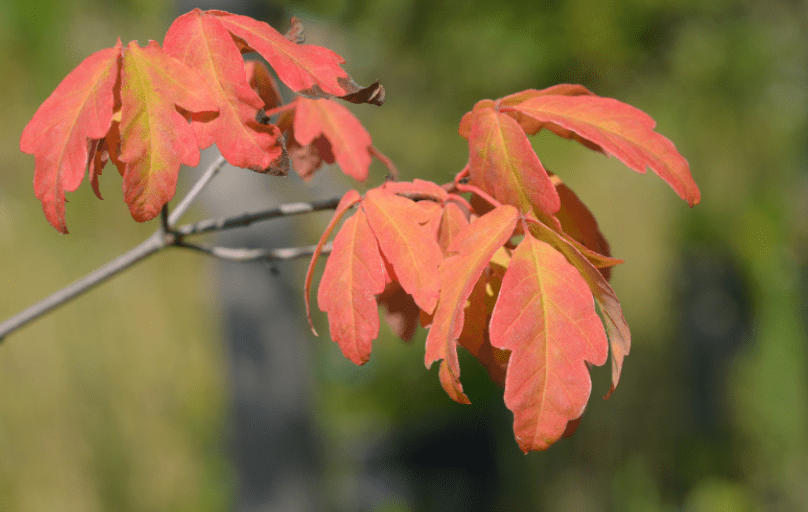Not All Maples Are Created Equal
Paperbark Maple, this slow-growing, deciduous tree is native to central China and grows to a height of approximately 20 feet, making it an excellent choice for a small yard.
It has an upright growth pattern and an average width of 15 feet. It enjoys full sun but may tolerate some shade.
The copper-to-cinnamon-colored, flaking bark of this tree makes it an attractive specimen. The polished sheen of much of the bark contrasts well with the snowy background.
The Paperbark Maple requires moist, well-drained soil and is not tolerant to drought. It has 3 to 5 inch long, green, trifoliate leaves with silvery undersides.
According to one of my sources, the scientific term Acer griseum, which means gray maple, was likely derived from the hue of the newly emerged spring leaves.
It is one of the last trees to turn color in the autumn, but when it does, its leaves are a brilliant shade of red.
The trees feature little, unremarkable flowers in the spring, but these will evolve into two-inch-long samaras, or winged seeds, that are quite attractive.
Why You Should Plant Paperbark Maple
Although it’s from China and therefore not native, compact paperback maple is the perfect specimen tree for Canadian city gardens, boasting a tidy yet dramatic profile.
As its name implies, it has shiny cinnamon-colored bark that exfoliates to reveal subtly striated new skin of pink, green and brown.
Where To Plant It
In sunny to lightly shady areas with well-drained soil having high humus content. The tree develops a striking rounded canopy, so I’ve kept mine to one stem and positioned it where it can be viewed and admired all year-round.
It seems unbothered by pests and neglect. And it develops a huge rootball, so place it away from other plants. It grows up to nine meters.
WHAT IT OFFERS
Paperback maple is the perfect specimen tree to position on its own, as the exquisite bark is just the beginning:
It provides four-season interest. In the spring, it develops fruit that won’t seed all over the place (it’s androdioecious). And in the summer, the canopy becomes a light haze of blue-green.
By the fall, blue-green gives way to an orange-pink to deep red – and it’s the last tree in the garden to erupt into flame.
AT A GLANCE
Family: Aceraceae (Maple)
Height: 20-25 feet
Light: Sun to partial shade
Soil: Slightly acidic but adaptable
Moisture: Well-drained, moist soil
Hardiness: USDA zones 4-8
























[…] air at sunset, munching leaves on shrubberies and most deciduous woods, comprising aspen, chestnut, maple, oak, poplar, willow, beech, and […]
Comments are closed.